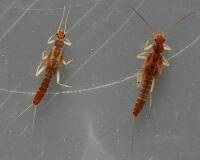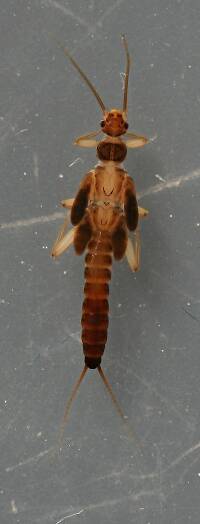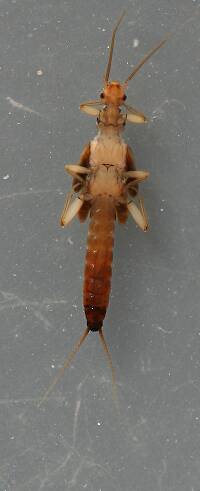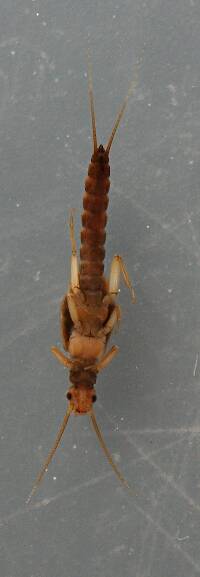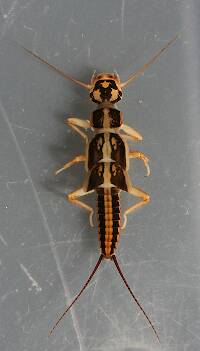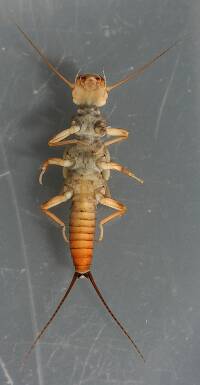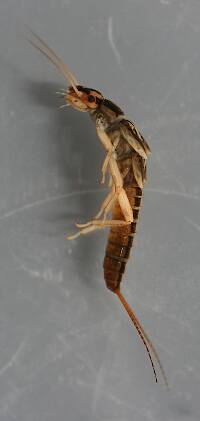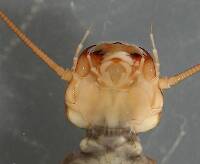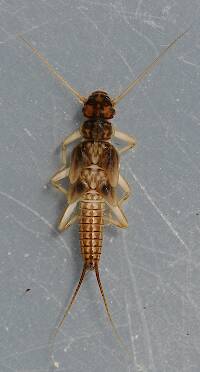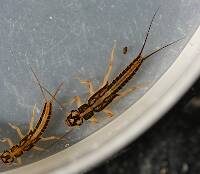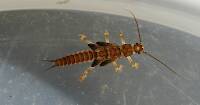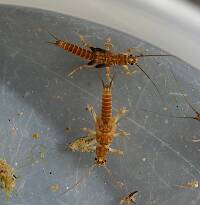
Blue-winged Olives
Baetis
Tiny Baetis mayflies are perhaps the most commonly encountered and imitated by anglers on all American trout streams due to their great abundance, widespread distribution, and trout-friendly emergence habits.
Featured on the forum

This specimen appears to be of the same species as this one collected in the same spot two months earlier. The identification of both is tentative. This one suffered some physical damage before being photographed, too, so the colors aren't totally natural. I was mostly photographing it to test out some new camera setting idea, which worked really well for a couple of closeups.

Troutnut is a project started in 2003 by salmonid ecologist Jason "Troutnut" Neuswanger to help anglers and
fly tyers unabashedly embrace the entomological side of the sport. Learn more about Troutnut or
support the project for an enhanced experience here.
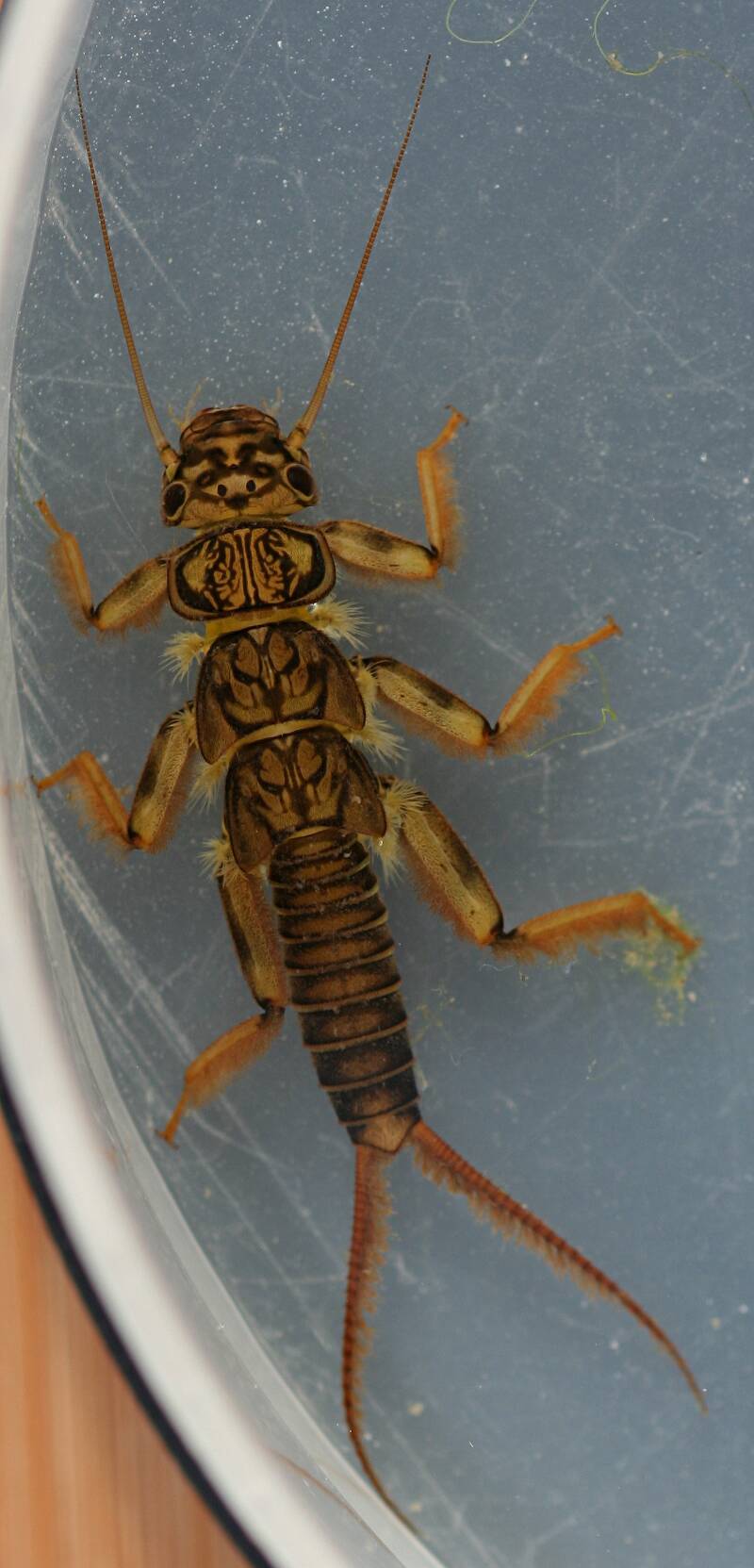
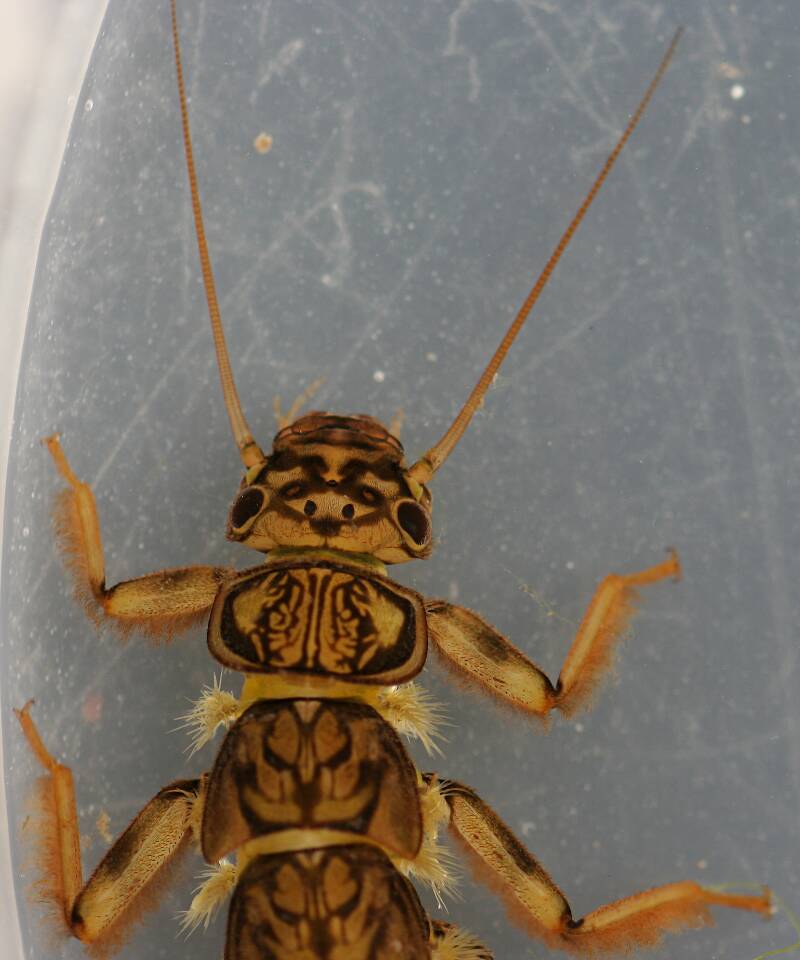
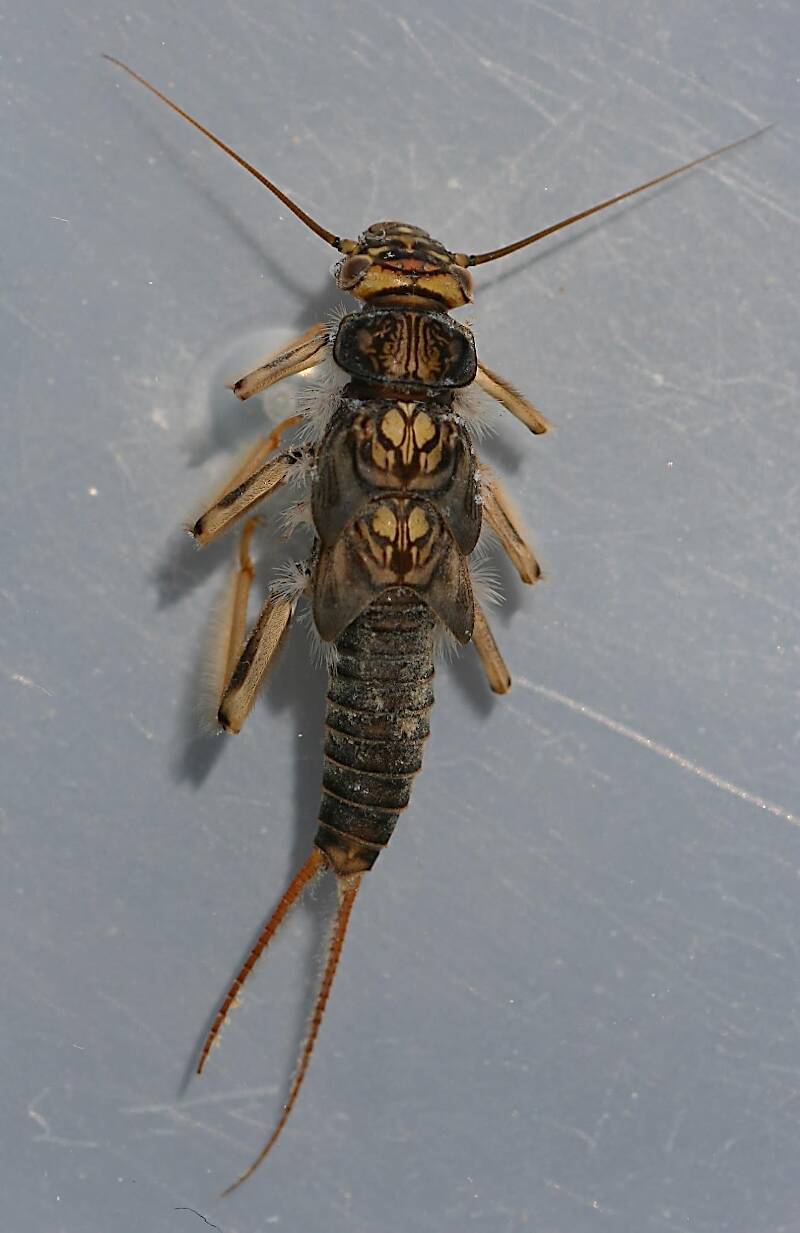
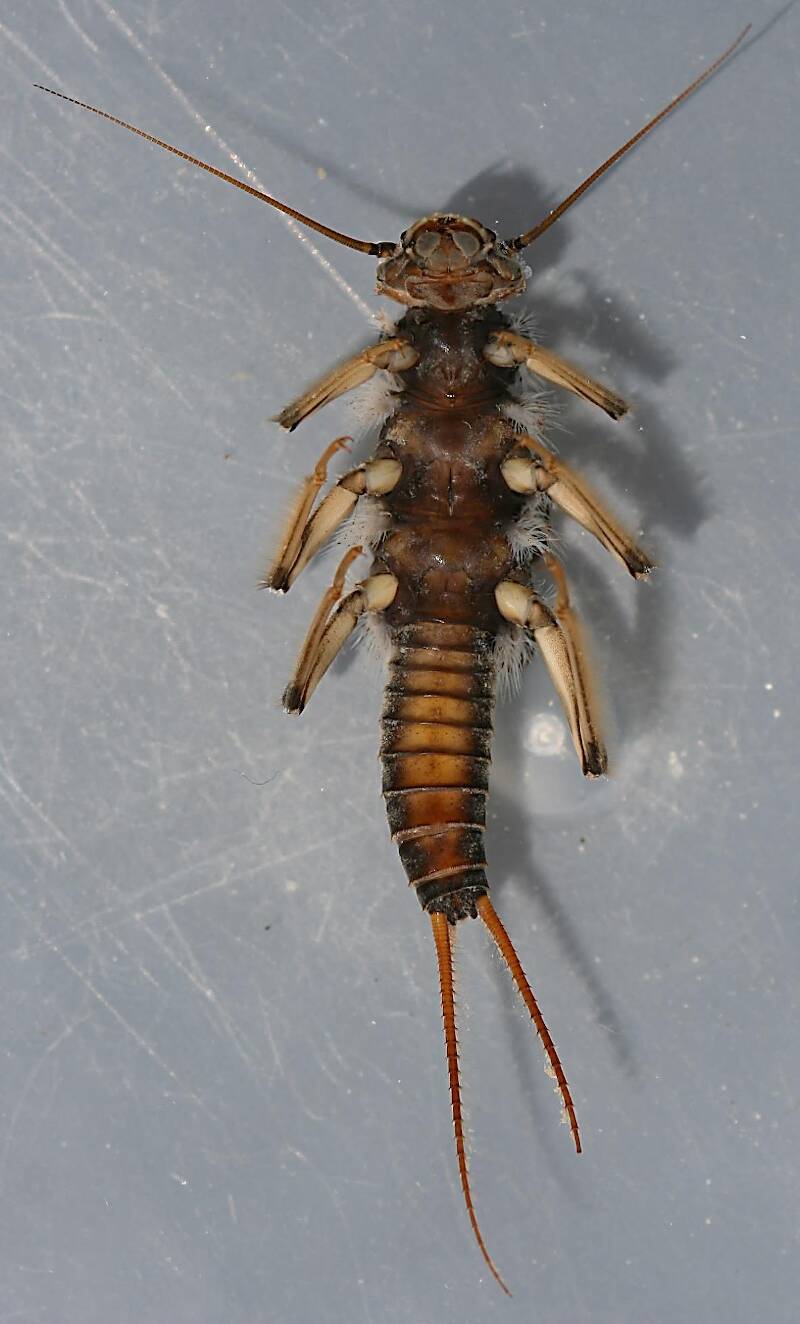
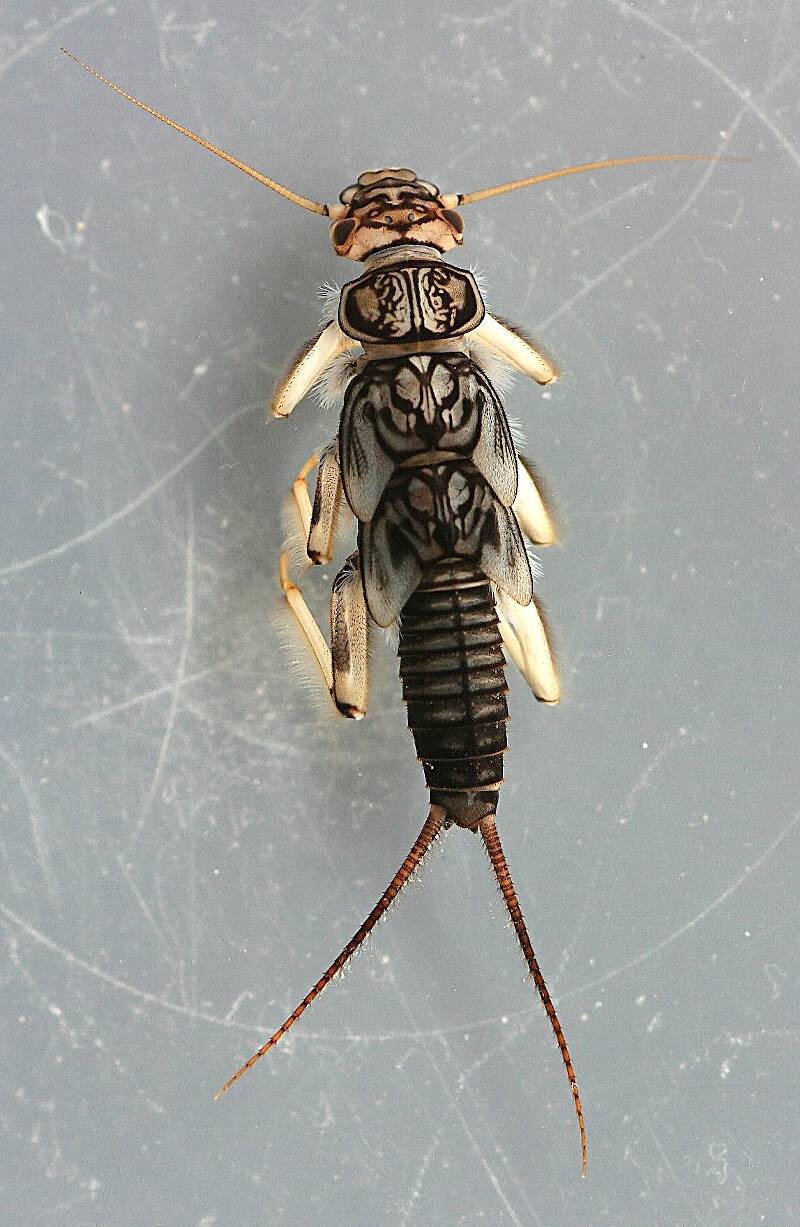
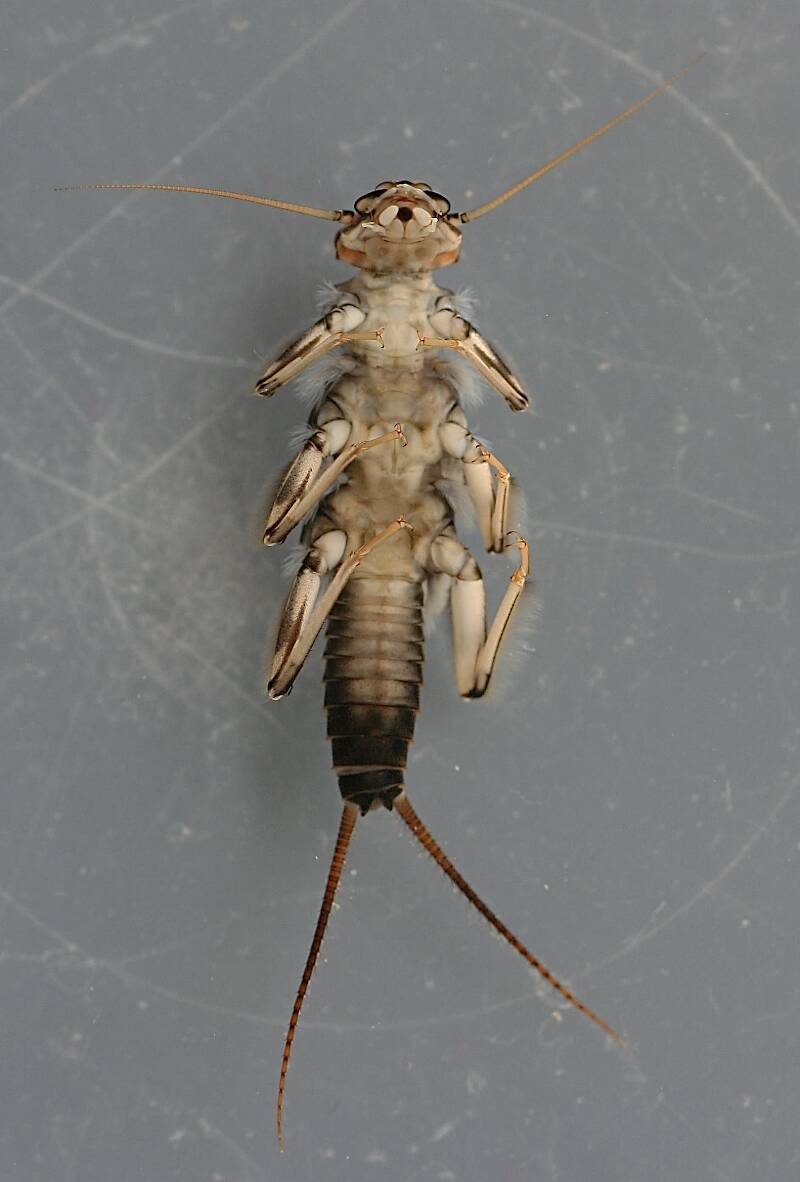

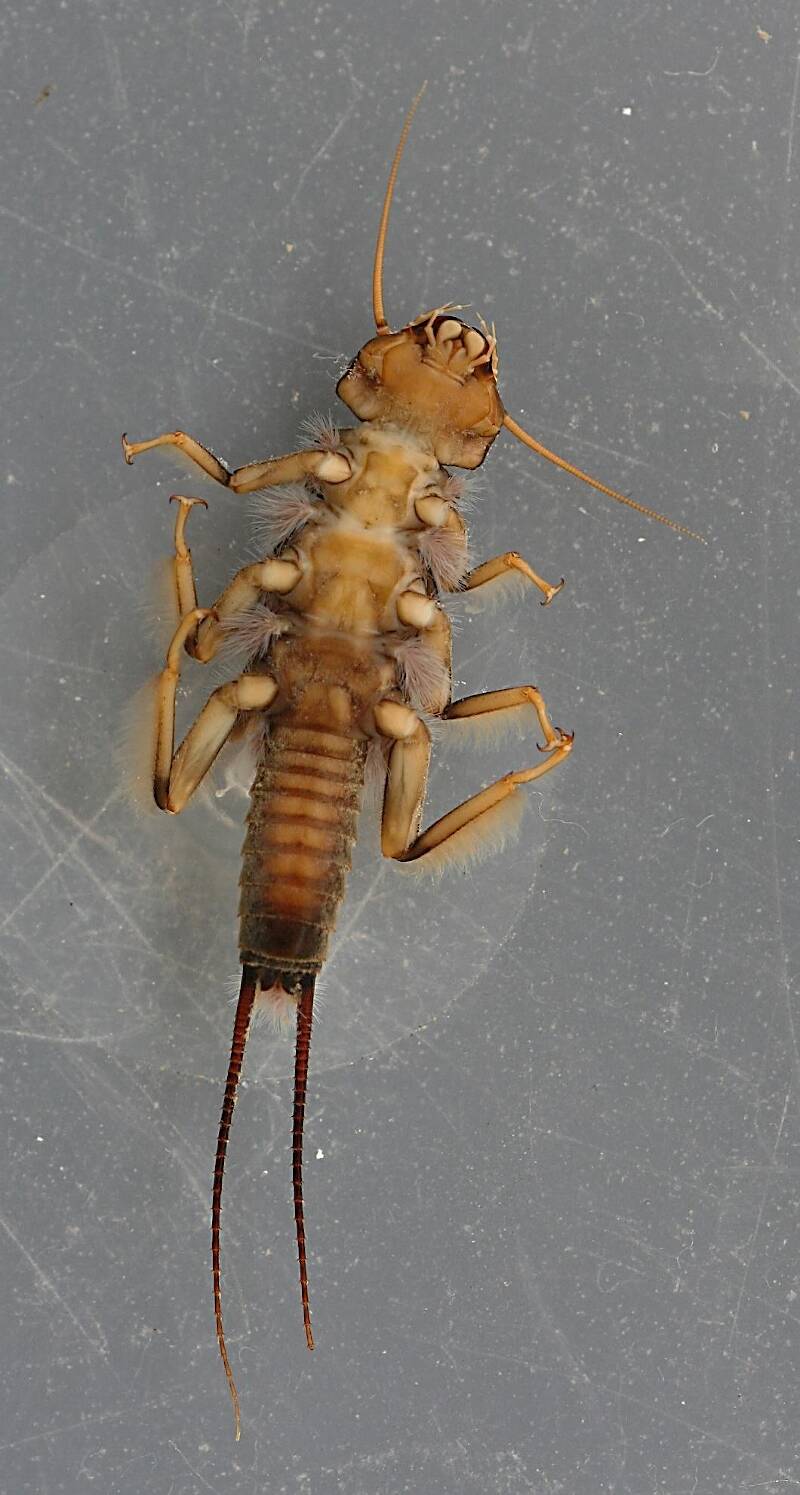
Millcreek on Sep 20, 2014September 20th, 2014, 4:04 pm EDT
Both nymphs were identified to genus using Merritt, Cummins and Berg {2008) as well as Stewart and Stark's "Nymphs of North American Stonefly Genera (Plecoptera)" (2002). Identification to species is simple for Calineuria californica since it's the only species in the genus. Hesperoperla pacifica is almost as easy since there are only two species in the genus,H. hoguei and H. pacifica. I used Baumann and Stark's article "Hesperoperla hoguei, a new species of stonefly from California (Plecoptera: Perlidae)" to identify Hesperoperla pacifica. Their paper can be seen here: http://biostor.org/cache/pdf/45/13/be/4513bea08a52c948d6ed015eb7908ff3.pdf
Neither stonefly is common in the area of the Russian River I've been sampling but they are both common in smaller creeks that are tributaries to the river. They're most commonly found in riffles and glides with a moderate to fast current and a substrate of medium sized gravel and cobbles.
Neither stonefly is common in the area of the Russian River I've been sampling but they are both common in smaller creeks that are tributaries to the river. They're most commonly found in riffles and glides with a moderate to fast current and a substrate of medium sized gravel and cobbles.
"If we knew what it was we were doing, it would not be called research, would it?"
-Albert Einstein
-Albert Einstein
Martinlf on Jan 29, 2016January 29th, 2016, 9:22 pm EST
Don't know how I (or others) failed to comment on these stunning photos previously, but . . . wow!
"He spread them a yard and a half. 'And every one that got away is this big.'"
--Fred Chappell
--Fred Chappell
Quick Reply
Related Discussions
Topic
Replies
Last Reply
2
Jul 22, 2019
by Millcreek
by Millcreek
0
Jul 19, 2019
by Millcreek
by Millcreek
1
Mar 9, 2012
by Wiflyfisher
by Wiflyfisher
10
Sep 10, 2012
by PaulRoberts
by PaulRoberts
Re: Helopicus subvarians (Stonefly) common in New York waters!
In the Stonefly Genus Helopicus by Walleye
In the Stonefly Genus Helopicus by Walleye
6
Jan 9, 2014
by Entoman
by Entoman
0
Feb 21, 2018
by Millcreek
by Millcreek



